Bose’s flagship Bluetooth noise canceling headphones struggle to stand out amidst fierce competition.
- Overall good ANC performance
- Easy to use and reliable touch controls
- Good microphone performance
- Good midrange tuning for a V-shaped signature
- Mostly inoffensive treble
- Good imaging
- Bose Music app allows some basic tweaks via EQ
- Analog input sounds surprisingly decent
- Plastic build
- No IP rating
- No wear detection
- Middling battery life
- Slightly higher clamp force might cause discomfort for larger heads
- Max volume might not be enough for loud listeners
- ANC performance falls behind category leaders
- MSRP is not competitive given the lack of certain features
Where to Buy
Introduction
A couple of years ago, Bose had a commendable lead in the Active Noise Canceling (ANC) Bluetooth headphones niche, given the sheer lack of competition. Fast forward to 2022, and the scene has changed dramatically.
Sony now boasts the “best ANC” crown, while Apple is hot on their heels with their debut wireless ANC full-size headphones. Established players like Beyerdynamic and Focal also offer cutting-edge tech in the ANC department.
As such, Bose Noise Canceling Headphones 700 (Bose 700 from hereon) face unique challenges. They have to retain exceptional ANC performance while providing great sound and other perks consumers have come to expect.
Do the Bose 700 rise to the occasion, or do they fall by the wayside? Let’s find out.
Packaging
Bose went for an environmentally sound approach with zero plastic, which I appreciate. The result is a bland-but-functional package.
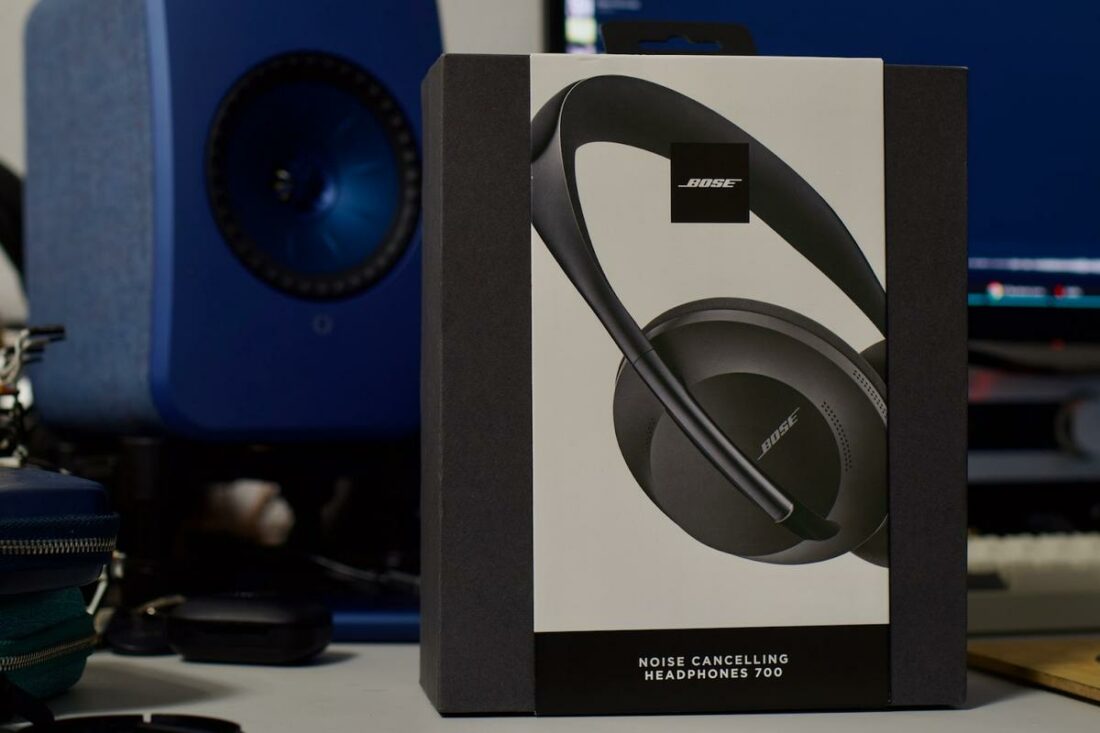
In the box
- Bose Noise Canceling Headphones 700
- 3.5mm to 3.5mm analog interconnect cable
- USB-C to USB-A charging cable
- Manuals
- Carrying case
The carrying case has a nifty pouch inside to store the cables. It doesn’t offer a lot of protection, though.
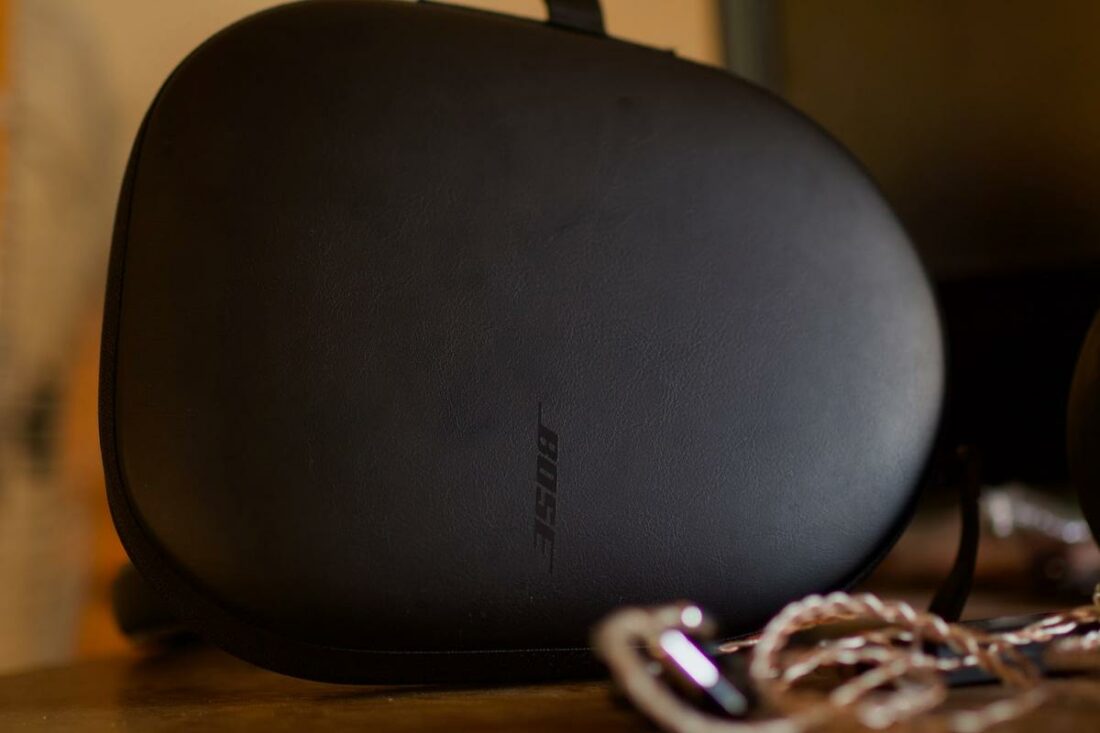
Battery ⓘ
- Battery Life: 20 hrs
- Charge Time (15 mins): up to 210 mins playback time
At around 20 hrs, the battery life of the Bose 700 is merely average. I needed to charge the headphones at least once a week, or twice if I had too many meetings. It also drains the battery slightly when powered off, which is frustrating.
Fortunately, the quick charge function is as good as the competition, if not better.
3 mins of charge can get you up to 3.5 hours of playback, provided you have a suitable USB-PD adapter and cable.
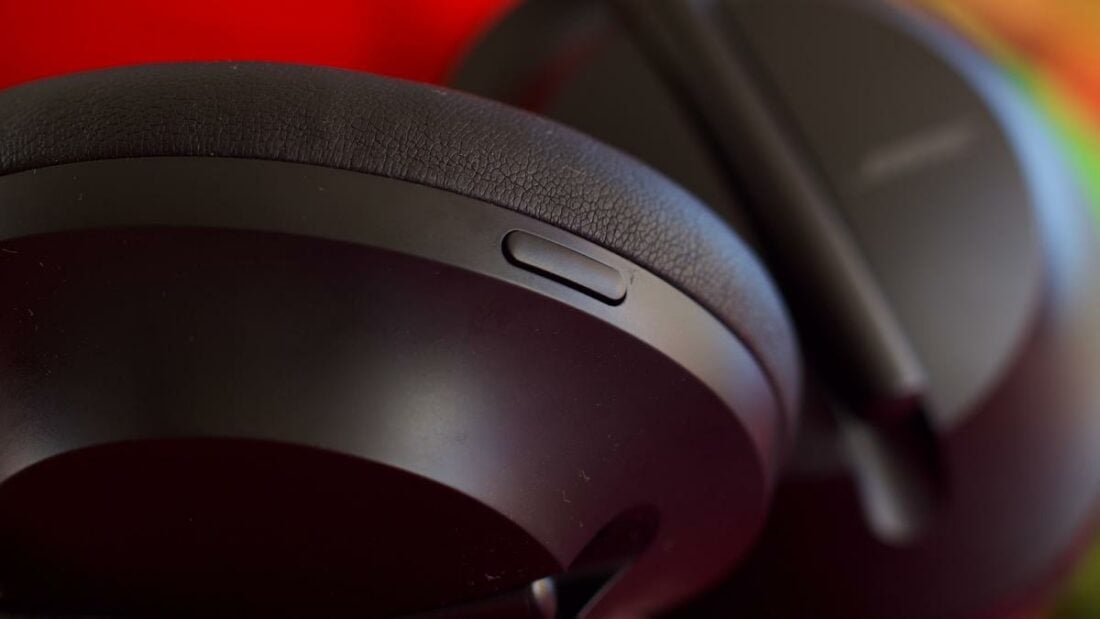
UX ⓘ
- Control Mechanism: Mechanical + Touch
- Touch Accuracy: Good
- Control Symmetry on both ear-cups: No
- Mono Use: No
- Right ear-cup hosts touch controls, including swipe gestures
Bose has completely revamped the control scheme compared to their QC series of headphones – there are both physical buttons and a touch-sensitive surface. I do wish the entire right earcup allowed touch gestures, as currently, only the half with the Bose logo allows gestures. But, overall, the gestures work well.
A short rundown of the available touch gestures:
- Double tap: Play/pause audio, answer/end a call.
- Tap and hold for one second: Remaining battery, decline a call.
- Swipe forward: Skips forward the current track.
- Swipe backward: Skips backward the current track.
- Swipe up: Increases volume by a step.
- Swipe down: Decreases volume by a step.
One annoyance I have is with the bottom button on the right earcup. I accidentally press it when picking the headphones up. I have to adjust my grip when holding the headphones to avoid unwanted button presses.
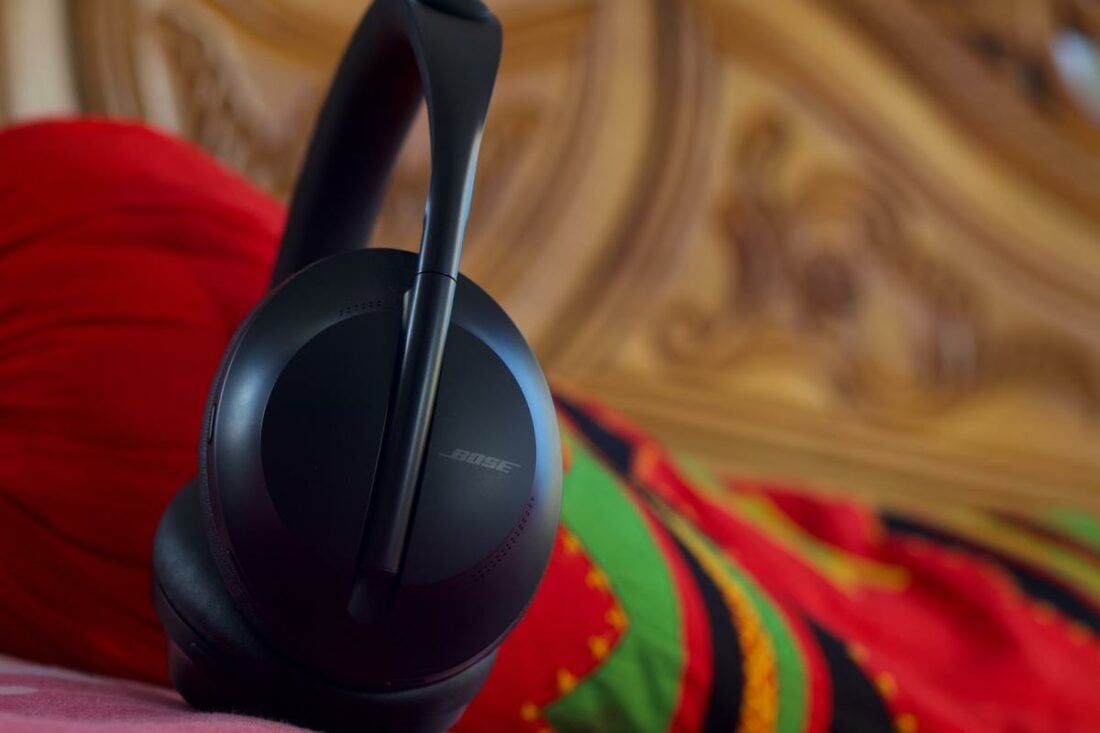
The right side also houses the type-C port (with fast-charging support) and the power/pair button. You must briefly press the power button to turn the headphones on or off. Holding it down starts pairing mode.
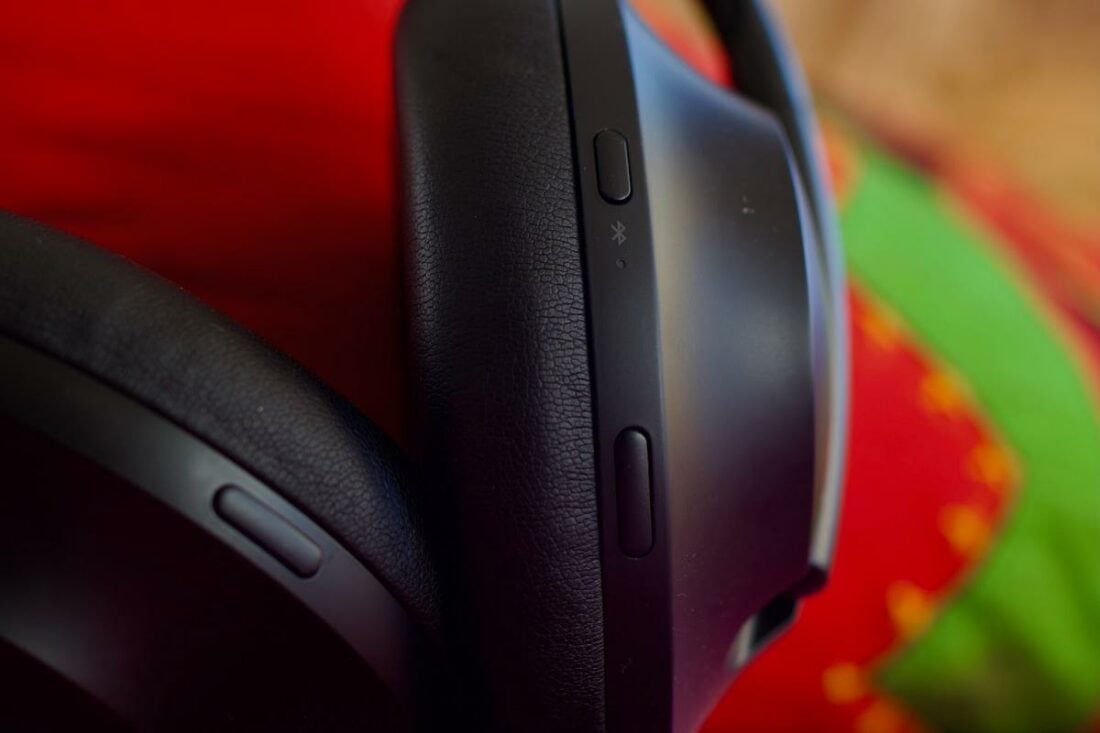
The left side ear-cup also has the ANC control button that toggles between maximum ANC, medium ANC, and no ANC. It also has a 2.5mm analog input, which sounds surprisingly decent and can be used in a pinch (low or empty battery).
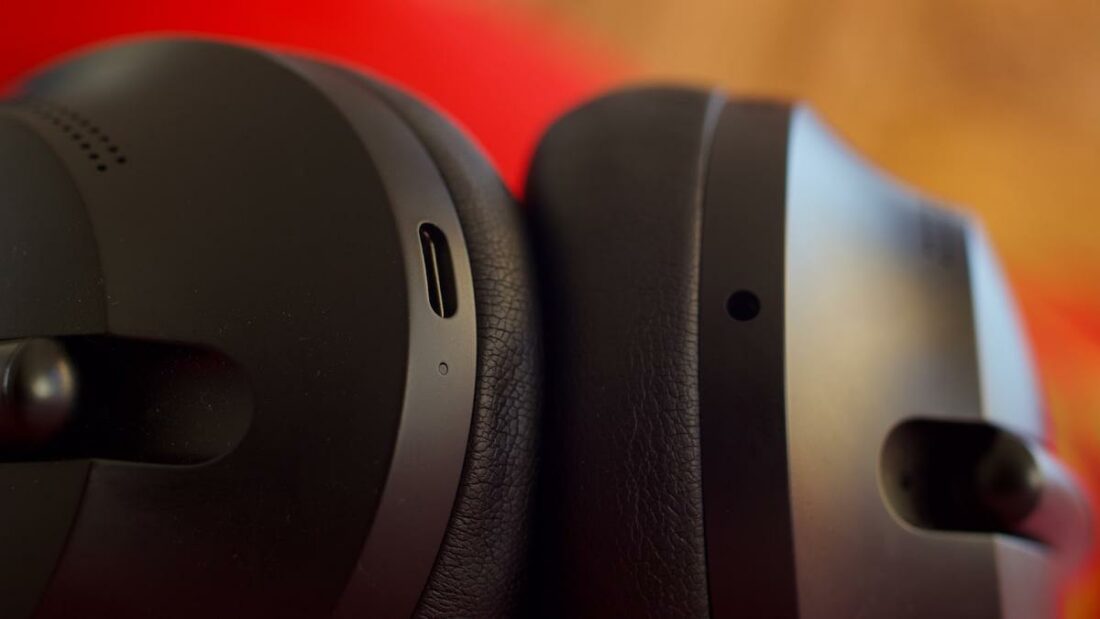
Design ⓘ
- Profile: Over-ear
- Material: ABS plastic
- Fit and Comfort: Good.
The entire construction is plastic. This has two advantages: light weight and RF transparency. The earpad and headband are padded with pleather, with soft memory foam underneath.
Unfortunately, the feel in hand is less premium than the price tag would suggest.
The plastic headband is another odd decision, as a metal headband would be far more robust. Moreover, the plastic edge of the headband is somewhat sharp. Not enough to hurt you, but enough to annoy.
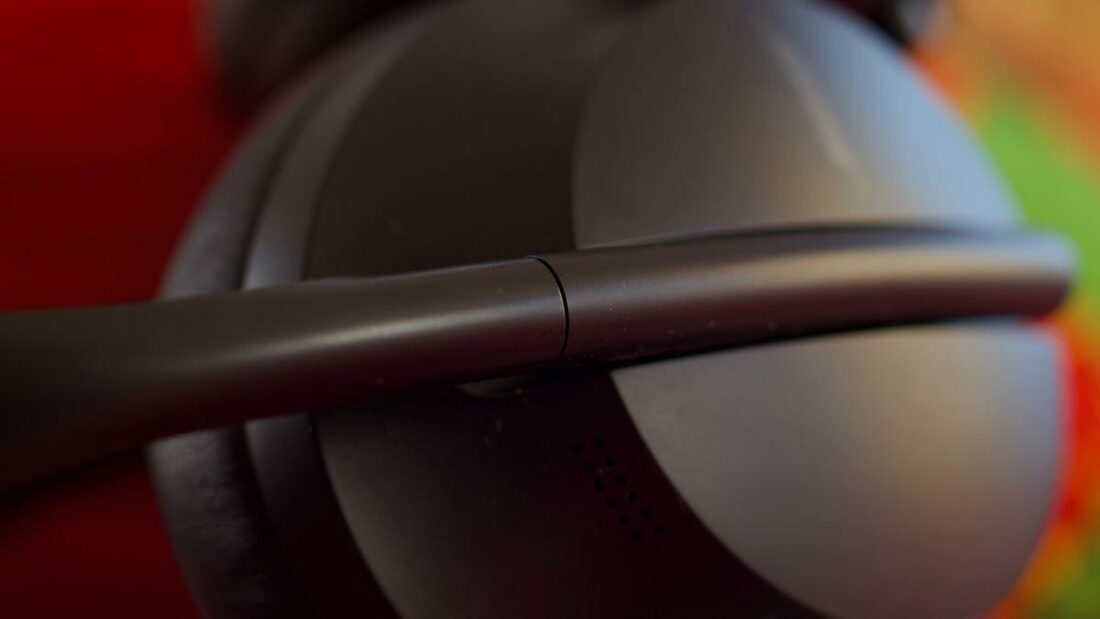
The adjustments are made by sliding the earcups up or down. There is no hard stop or clicks when adjusting the earcups. This is another pet peeve of mine, as it’s difficult to determine the exact headband position.
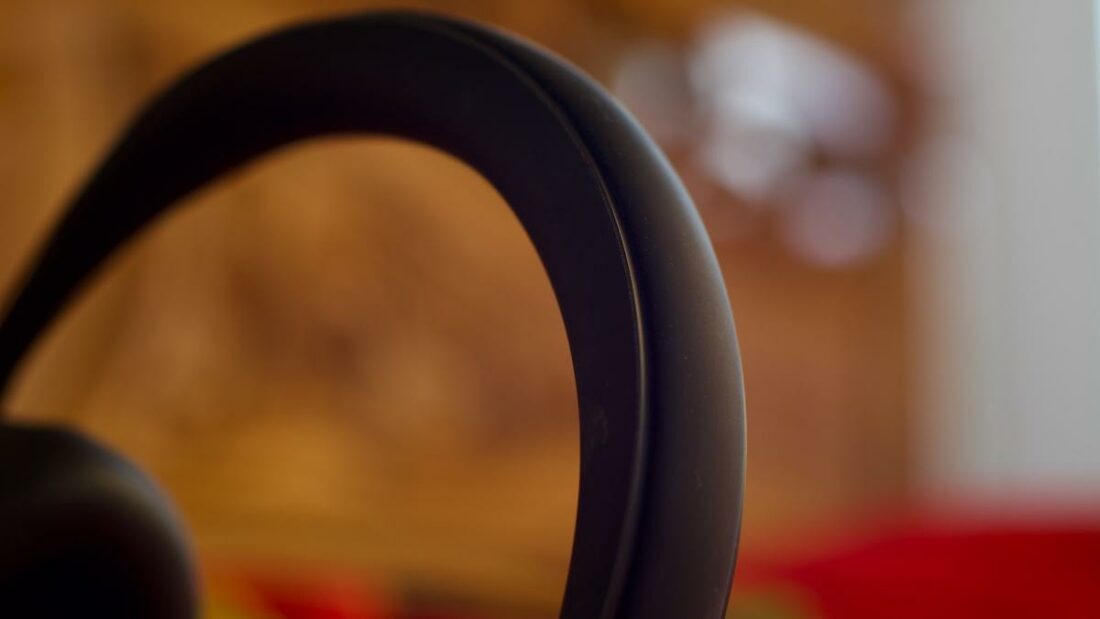
The hinge mechanism allows for a 90-degree rotation of the earcups. It also helps move the earcups across the Y-axis to better seal against the user’s face.
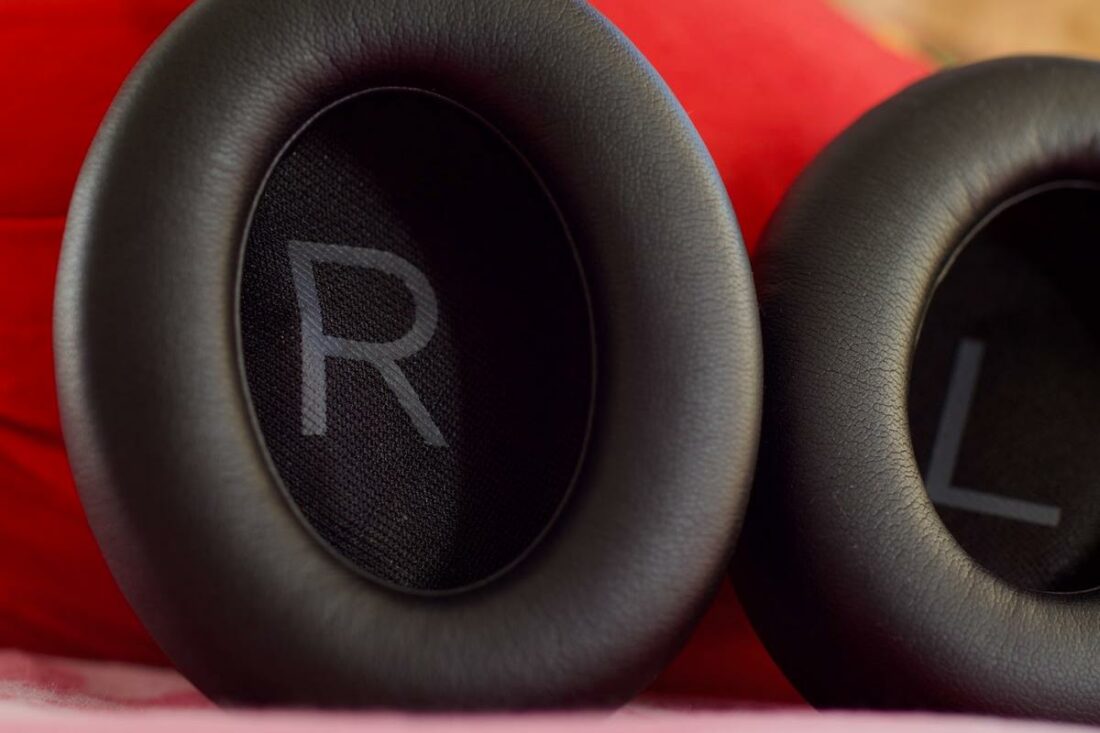
The earpads look and feel comfortable, but two issues arise when wearing them. First up – the clamp can exert extra pressure if you have a large head. Secondly, they can get sweaty on summer days.
Mic ⓘ
- Noise Cancellation: Outstanding
- Voice Pick-up: Outstanding
There are eight different microphones placed around both earcups. They pick up audio in noisy environments, allowing the user to speak at a normal volume.
Another function the microphones serve is picking up the frequencies that need to be attenuated via ANC.
These mics form the basis of the Bose 700’s great noise-cancellation performance.
They manage to drown out the low hum of engine noises really well. It’s the high-pitched sounds that do not get as attenuated. On the plus side, the Bose 700 do not exhibit the “vacuum” effect of the Sony WH-1000XM5 when no music is running with ANC set to max.
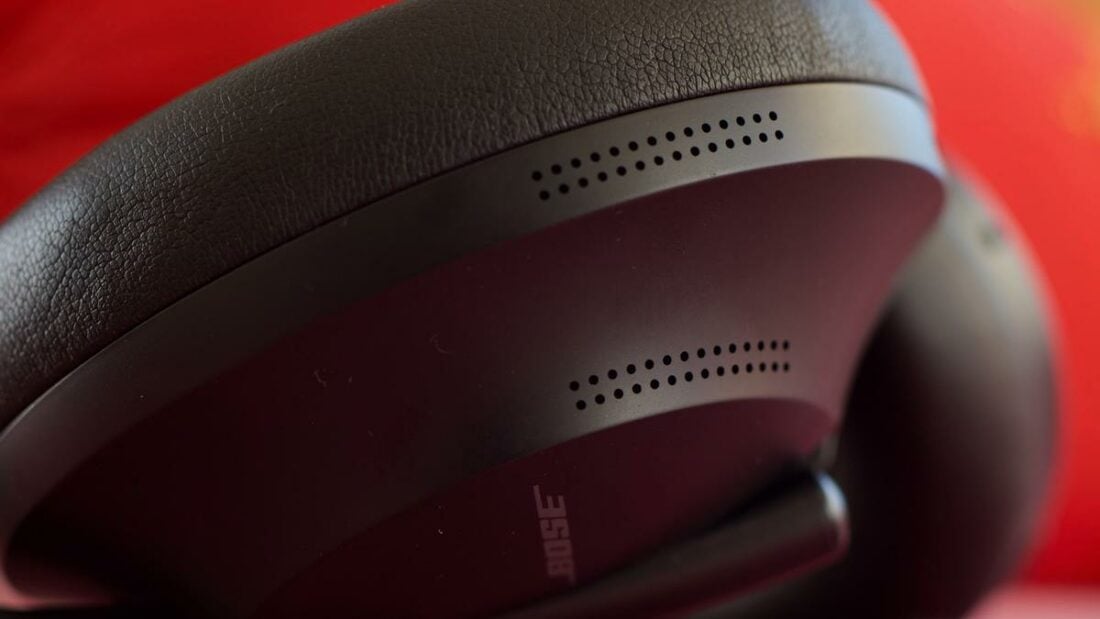
Mic demo
Sound ⓘ
- Driver: Details unavailable.
- Sound Signature: Warm
- Bass: Good
- Mids: Good
- Treble: Average
- Soundstage: Average
- Imaging: Good
- Dynamics: Average
The general sound signature of the Bose 700 is warm, with some recession in the lower mids and a noticeable lower-treble peak.
Some minor adjustments can be made via the app to reduce the sub-bass or some of the lower-treble, but the EQ isn’t comprehensive enough to make minute changes.
Bass
Stock tuning of the Bose 700 has a controlled bass boost, with the sub-bass boosted by +5dB over the lower midrange. The boost occurs below 300Hz, so the bass bloat does not encroach much into the mids.
Bass is not the tightest, definitely not as tight as some wired planar-magnetic headphones you can get in this price range. Bass texture is lacking, and deep, rumbling bass sounds “one-note” -ish. In fast bass sections, notes tend to smear into each other.
Distortion in the bass region is one of my pet peeves with most BT headphones and earphones. The Bose 700 combats this by limiting the max volume. Not a bad solution, but loud listeners will find the volume levels inadequate.
Mids
The upper-midrange is well-controlled and does not sound shouty or shrill.
The tonality of the mids is mostly correct, as the upper-mids peak near 2.5kHz, and there is no abrupt bump between 1-3kHz. I wish the lower mids were lifted by a few dBs between 500Hz – 1kHz, as baritone vocals sometimes lack body and presence.
Bose got the midrange tuning right, with a good balance between the low-end and vocal fundamentals.
Treble
Treble is the weakest aspect of the Bose 700, with the distracting lower-treble peak around 5kHz causing tonal aberrations.
This peak also makes the leading edge of acoustic guitars sound over-sharpened, as is noticeable on the guitar strums of Damien Rice’s Canonball.
Cymbal hits do not have their characteristic resonance, and the sense of air is absent in tracks. I tried to EQ in extra treble via the app, but it didn’t help much.
Dynamics
Due to some codec-related compression and a lack of treble extension, macrodynamic punch lacks a sense of grandeur. Microdynamics (subtle shifts in volume) are also less distinct than other top offerings.
Soundstage
The soundstage has decent depth, though the width is average. Given the context of closed-back BT headphones, the Bose 700 perform average or above average in this aspect.
Imaging
Imaging is surprisingly solid, with good left and right delineation. Ordinal imaging (top-left, bottom-right) is a weak spot, and so is center imaging. Again, this is good performance for a pair of BT headphones, even though nothing special in the larger scheme of things.
Active noise cancellation
With the ANC turned on, the sound signature of the Bose 700 barely changes. The ANC also allows listening to the headphones at lower-than-required volumes. However, the Bose 700 do not offer any Equal Loudness feature.
I recommend keeping ANC on in most cases.
Connectivity ⓘ
- Audio Codec: SBC, AAC
- Bluetooth Version: 5.0
- Auto-connect when: After turning on
- Average drop-outs in an hour: 0 – 2 times
- Multi-point connection: Yes
The connection is rock-solid, and pairing is fairly simple once the headphones are put in pairing mode. Bluetooth multi-point function works seamlessly too, as you can connect to multiple devices simultaneously and easily switch between them.
Waterproof ⓘ
- IP Rating: Not rated.
No official IP rating here, which is a bummer.
Software ⓘ
- Available on: iOS, Android
- 4-band EQ
- 4 preset EQs
- Ability to save and import profiles across devices
- Auto Pause: not available.
The lack of wear detection or auto-pause is another huge bummer.
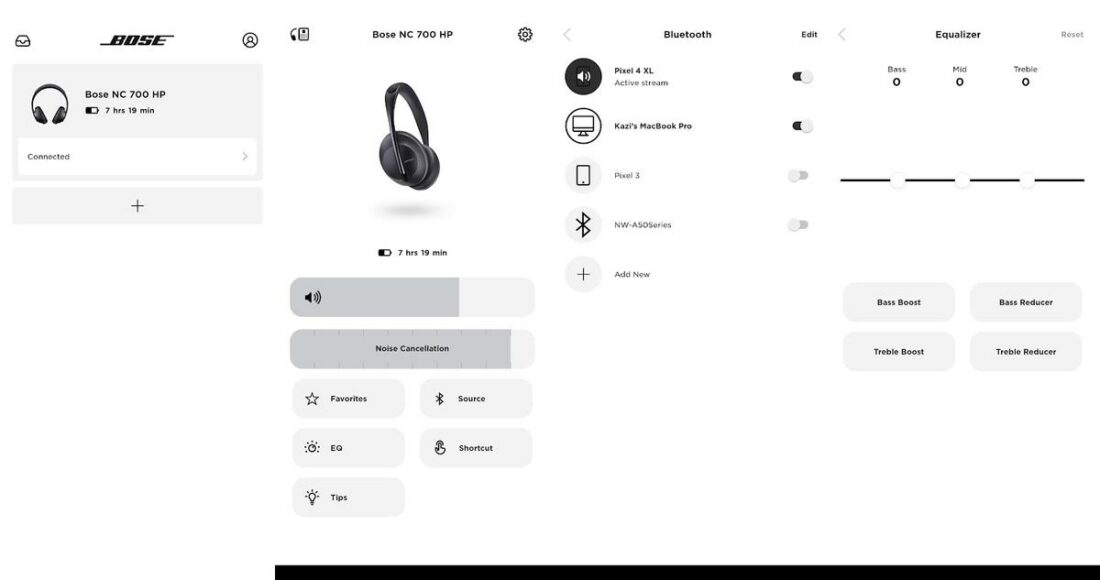
Comparisons
Bose 700 Vs. Sony WH-1000XM5
Sony’s WH-1000XM5 are class leaders in terms of ANC performance. The Bose 700NC struggle to compete here. The build is identical, albeit I find the Sonys to have less clamp.
As for the sound, in stock form, the WH-1000XM5 sound bassier and smoother. You can easily control the amount of bass via the app and make them sound cleaner and clearer. The Bose 700 fall behind in this aspect.
The Sonys do not exhibit the lower-treble peak of the Bose 700, which can lead to some tonal aberration. Imaging is similar between them, but staging is wider and deeper on the WH-1000XM5. Dynamics are less compressed as well.
The Sony headphones also have other nifty features like wear detection, DSP effects, and better gesture control.
The extra price premium for the WH-1000XM5 over the Bose 700 is worth it.
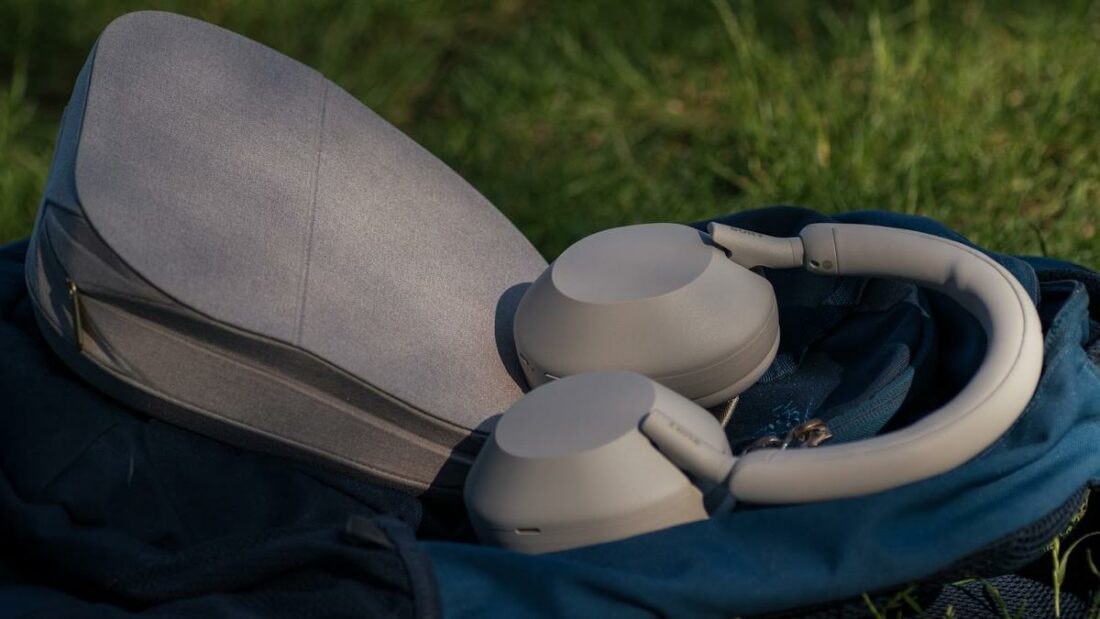
Bose 700 Vs. Apple Airpods Max
Apple’s flagship Airpods are unlike any other BT headphones in the market.
Aluminium vs. plastic – I know which one I am gonna pick. From a build quality perspective, they blow the Bose 700 away. The RF antenna on the Airpods Max is etched onto the aluminum chassis, so the signal remains strong despite a metal build.
In terms of sound, it’s somewhat strange that the Airpods Max sound better when connected to iPhones/Macbooks than to an Android phone (my Pixel 4XL in this case). The mid-treble peak near 9kHz becomes more prominent on non-Apple devices, so make of that what you will.
The bass on the Airpods Max is less prominent, and they focus more on midrange clarity than outright bass punch. The treble is also more extended, though the 9kHz peak rears its head every now and then, causing fatigue.
Imaging is somewhat similar on both these headphones, even if Airpods Max tend to sound wider. None of these headphones support high-bitrate codecs. Airpods Max have official water and dust resistance, unlike the Bose 700.
ANC is better on the Airpods Max as well, along with a better implementation of the “transparency” mode (where you can hear the sound around you through the headphones).
Overall, the Airpods Max are all-around superior to the Bose 700, but the much higher price tag may be a tough pill to swallow.
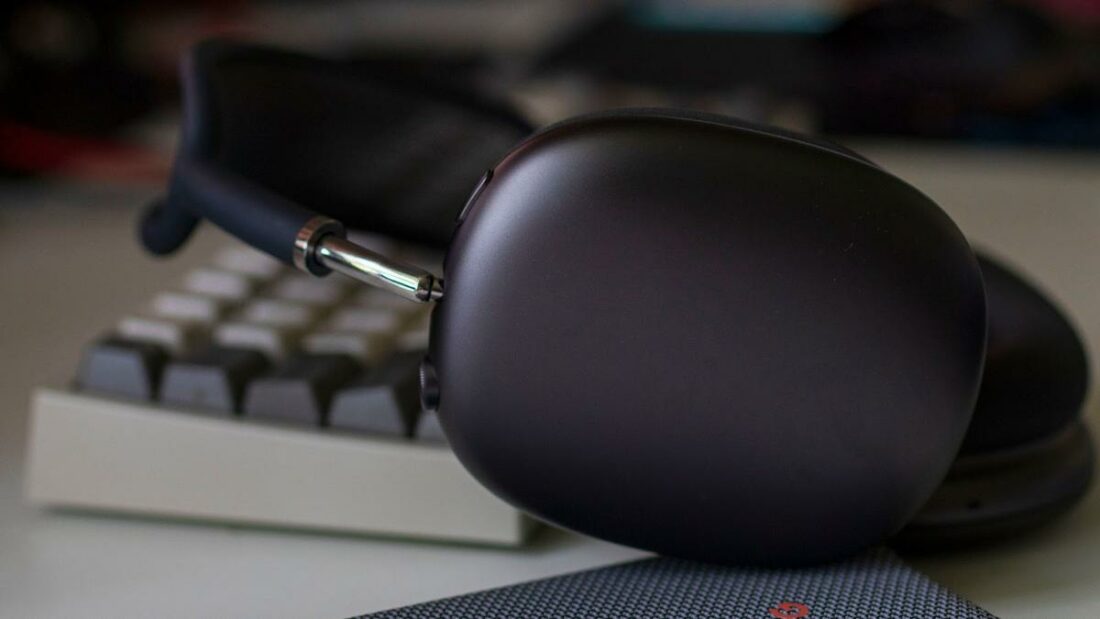
Conclusion
Bose 700 is the very definition of a mixed bag.
They have good ANC, are comfortable, and offer decent all-around performance. The sound quality is largely inoffensive as well.
Too bad that the competition matches or exceeds Bose in every single parameter. There is not a single aspect where the Bose 700 offer class-leading performance. They are adequate, but being adequate is not good enough anymore.
Couple all that with the premium price tag, and Bose is treading dangerous waters. At or near full MSRP, I cannot recommend the Bose 700. If you can find a pair around USD$200, however, give them a shot.
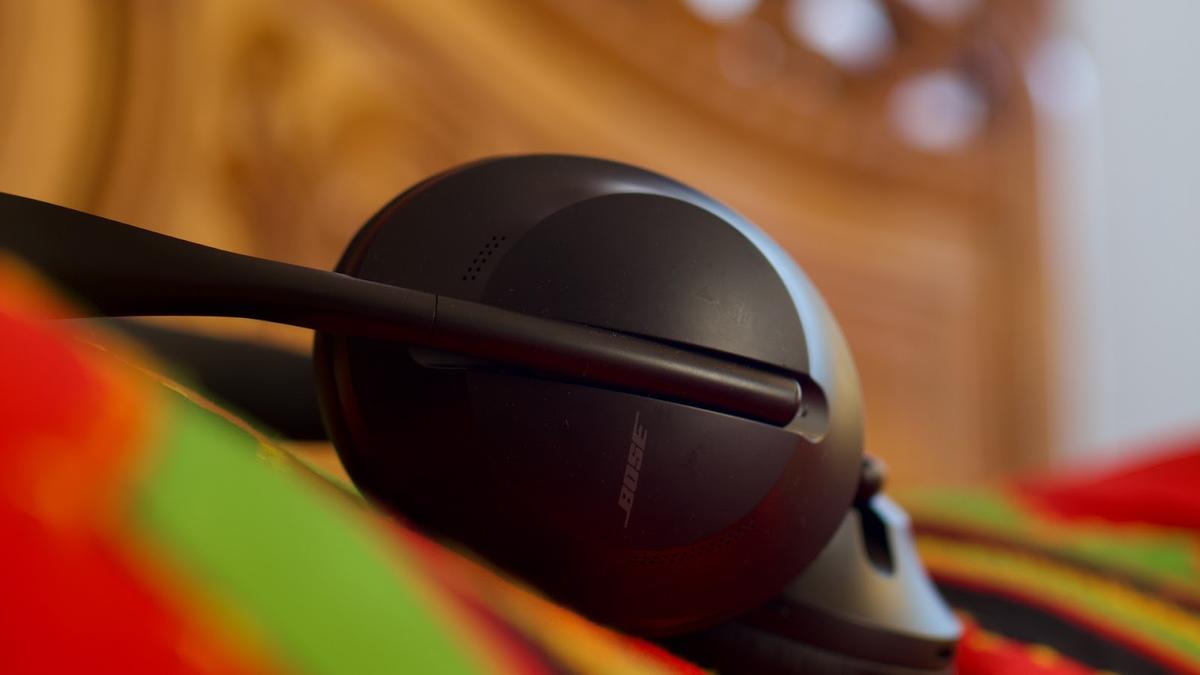
I tried 3 Sonys (including XM5s) and 3 Bose (including 700s) at the store, and settled on the 700s. ANC on the Sonys seemed to be nothing more than increased bass and they were noticeably hotter on my head. I’m happy with my purchase. Your review suggests you’re a Sony shill.
Also the nc 700 are nearly 4 years old. Of course there will be better anc headphones.
Sony 1000XM5 ear pads tend to get hot, and that is explicitly mentioned in this review already (check last paragraph of “Comfort” section).
The Bose 700 are good, and I tend to use them in the summer a lot. But they’re old and showing their age now.